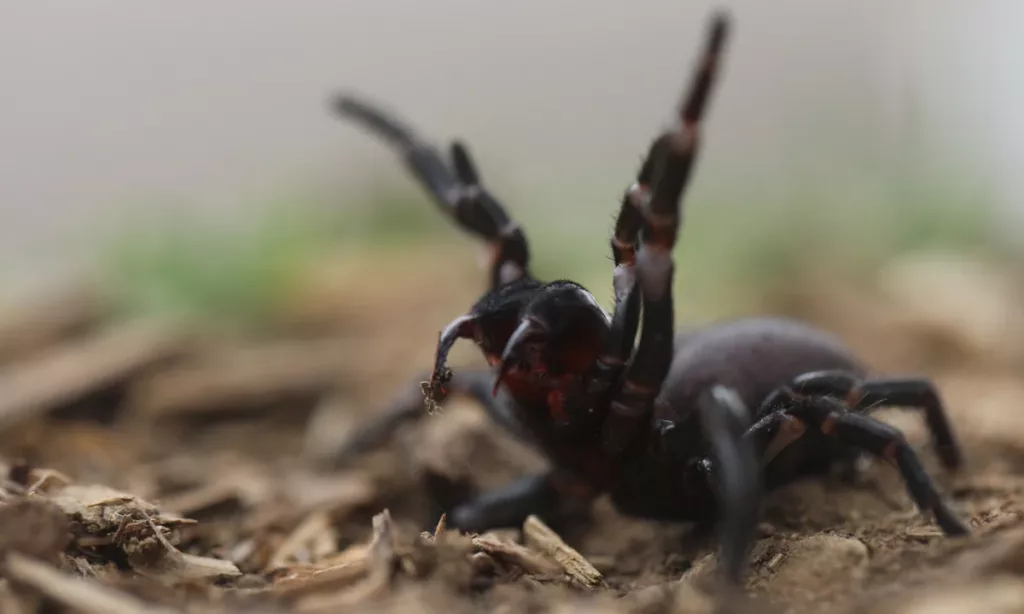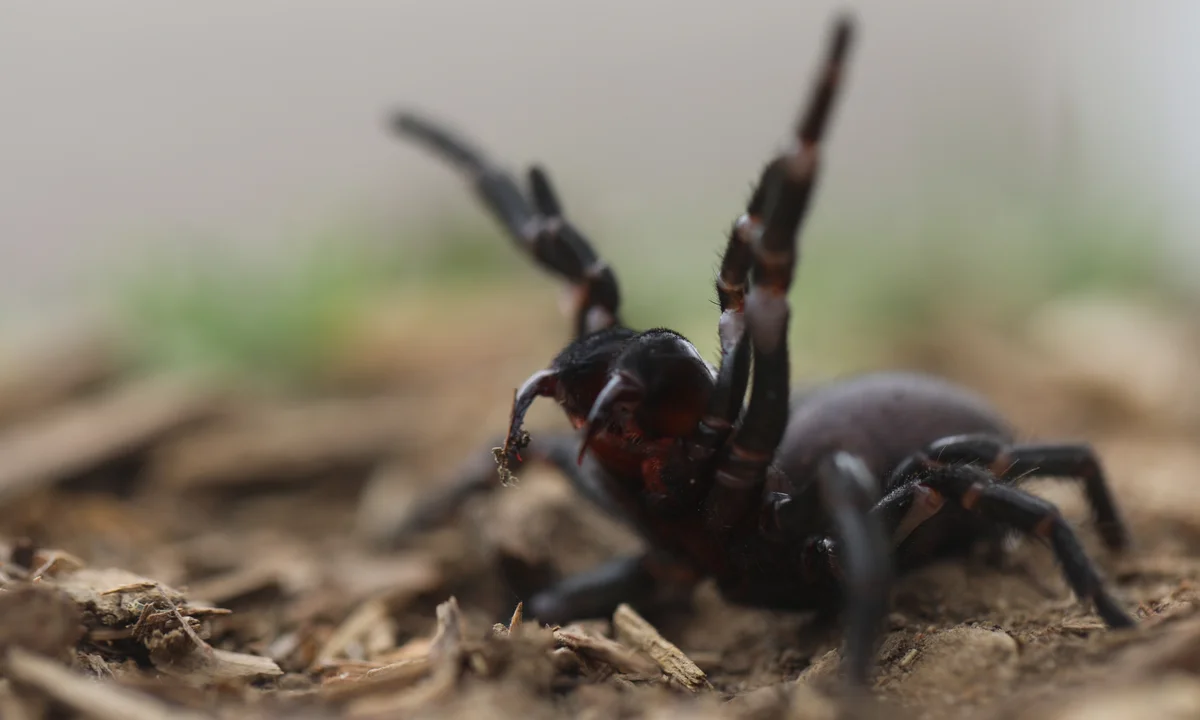
Australia’s wilderness is breathtaking, but it’s also home to some of the world’s most dangerous creatures. Among them is the infamous Sydney funnel web spider (Atrax robustus), a creature every hiker in the Sydney region should be aware of. Whether you’re tackling a trail or exploring bushland, knowing how to identify and handle an encounter with this spider is crucial. For the first time I came across one of these on my hike last week in the Blue Mountains National Park. Unusually, it was on an open fire trail which is not the norm.
What are the Sydney Funnel Web Spider facts you should be aware of?
Let’s dive into the fascinating (and slightly terrifying) world of the Sydney funnel web spider.
What is the Sydney Funnel Web Spider?
The Sydney funnel web spider is one of Australia’s most venomous spiders. With its glossy black body, large fangs, and intimidating stance, it’s hard to miss if you come across one.
- Size: Females are larger, reaching up to 3.5 cm in body length, while males are smaller at around 2 cm.
- Color: Typically shiny black or dark brown.
- Features: They have powerful fangs capable of piercing fingernails—yes, really!
Despite their fearsome reputation, they’re not aggressive unless provoked. However, if they feel threatened, they’ll rear up on their hind legs, exposing their fangs.
Where Are They Found?
Sydney funnel web spiders are primarily found in New South Wales, particularly around Sydney, the Central Coast, and the Blue Mountains. They thrive in moist, sheltered environments, such as:
- Burrows lined with silk.
- Under rocks or fallen logs.
- Gardens, compost heaps, or even swimming pools!
They’re most active in summer and autumn when males wander in search of mates, making human encounters more likely.
How Dangerous is the Sydney Funnel Web Spider?
The Sydney funnel web spider’s venom is highly potent, especially in males. Its neurotoxin, atracotoxin, affects the nervous system, causing severe symptoms in humans.
Symptoms of a bite include:
- Intense pain at the bite site.
- Sweating and muscle twitching.
- Nausea and vomiting.
- Difficulty breathing and confusion.
Before the antivenom was developed in 1981, bites were often fatal. Thankfully, with prompt medical attention, fatalities are now rare.
How to Avoid Encounters While Hiking
Hiking in funnel web spider territory doesn’t mean you need to stay home. Here’s how to minimize your risk:
- Watch Your Step: Be cautious around logs, rocks, and leaf litter.
- Wear Protective Gear: Thick hiking boots, long socks and gaiters can help prevent bites.
- Check Your Gear: Spiders can crawl into tents, shoes, or backpacks if left unattended.
- Stick to the Trail: Avoid wandering off into dense bushland where spiders are more likely to be hiding.
What to Do If Bitten
If you’re bitten by a Sydney funnel web spider, stay calm and follow these steps:
- Apply a Pressure Immobilization Bandage: Wrap the bite area tightly, starting from the site and working up the limb. This is the same technique as for a snake bite. Here is my guide on this.
- Keep the Victim Still: Limit movement to slow venom spread.
- Call Emergency Services (000 in Australia): Time is critical, so get help immediately.
- Monitor Symptoms: Stay alert for worsening symptoms while waiting for help.
The antivenom is highly effective, but it must be administered quickly.
Fascinating Funnel Web Spider Facts
- Fang Power: Their fangs are so strong they can pierce soft shoes.
- Climbers: While they prefer burrows, they can climb rough surfaces with ease.
- Selective Venom: Their venom is harmless to most animals but highly toxic to primates, including humans.
- Aggressive Mating Season: Male funnel web spiders become far more active during summer, which is why you’re more likely to encounter them then.
- Underwater Survival: Sydney funnel web spiders can survive underwater for hours by trapping air bubbles around their body. This is why they are often found alive in swimming pools.
Why Hikers Should Care
As hikers, we share the trails with all kinds of wildlife, from kangaroos to creepy crawlies like the funnel web spider. Understanding their behavior and habitat helps us enjoy the outdoors safely.
Remember, spiders are part of Australia’s rich biodiversity and play an important role in the ecosystem. Awareness and respect go a long way in avoiding negative encounters.
My Final Thoughts
The Sydney funnel web spider may have a fearsome reputation, but with a little knowledge and caution, you can hike safely in its territory. Stay prepared, keep your eyes open, and always respect the natural world around you.
Have you had an experience with a Sydney funnel Web? You can leave your comments here.

